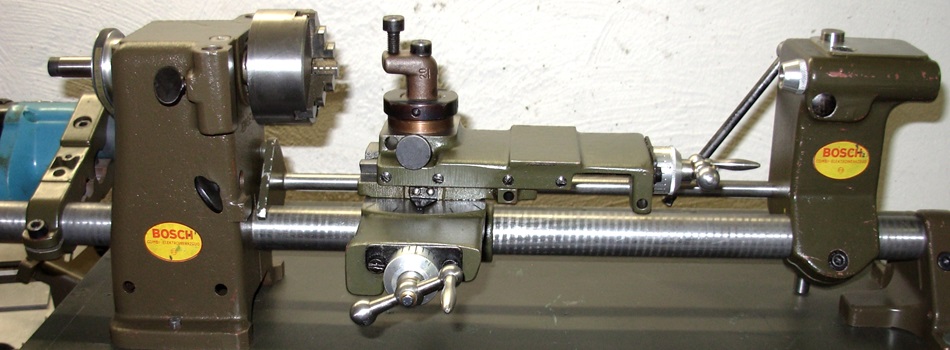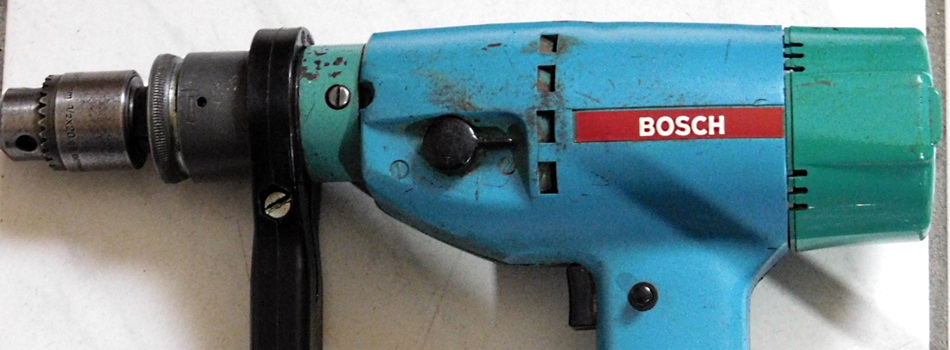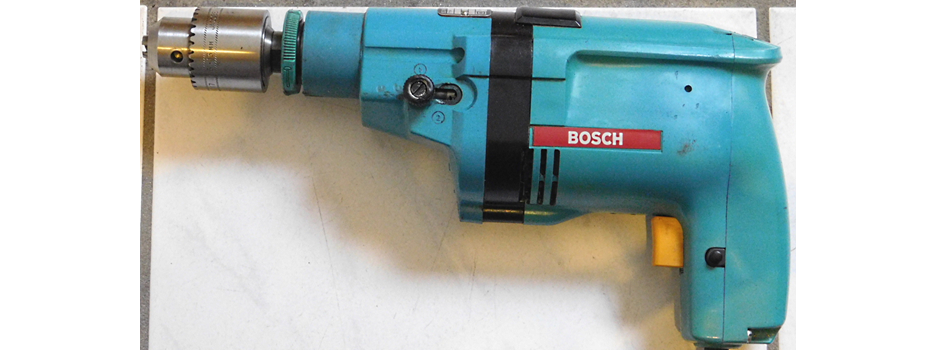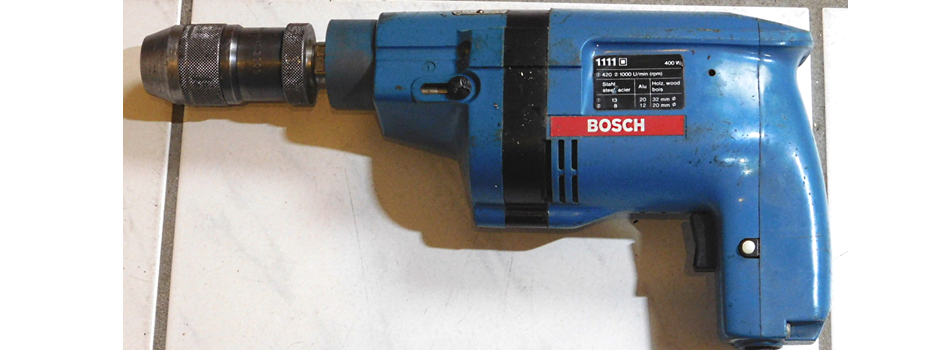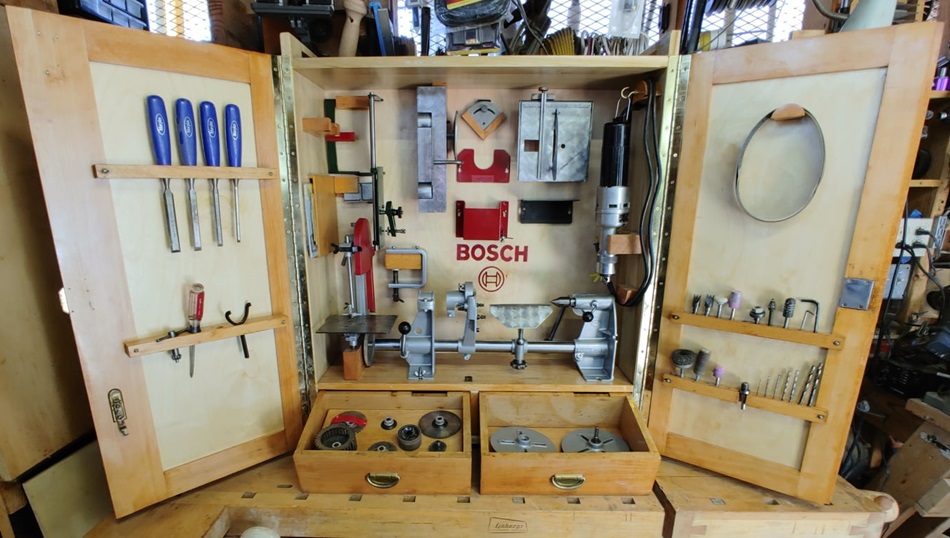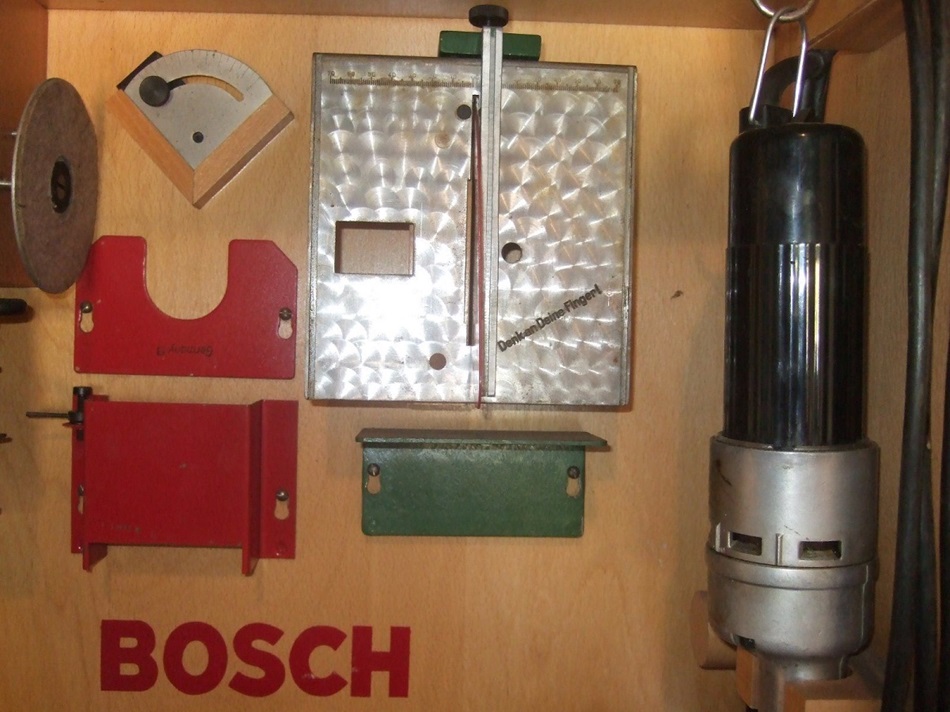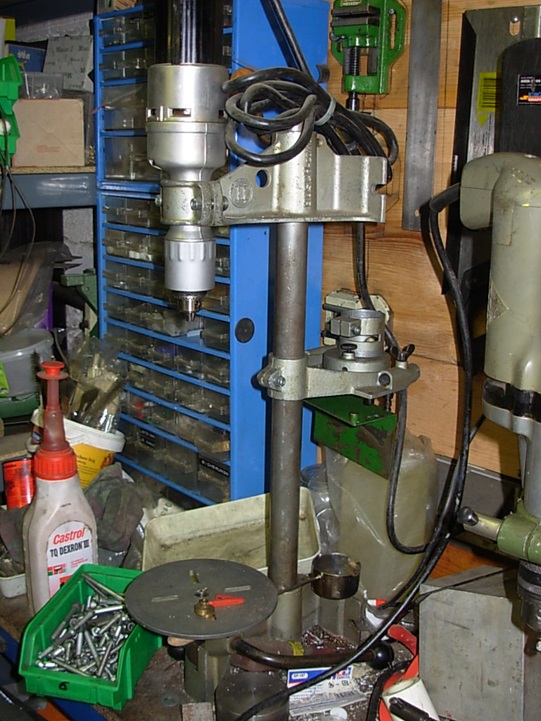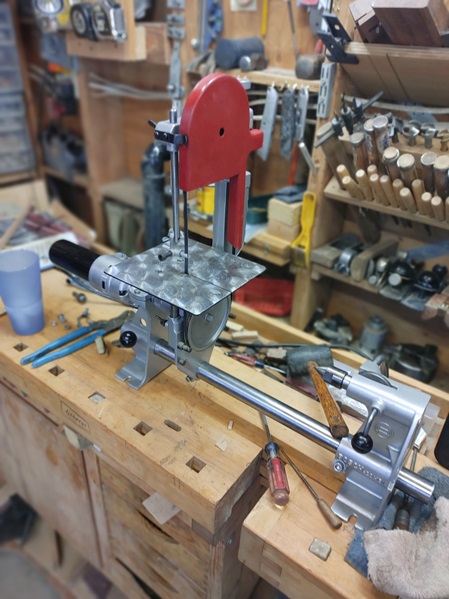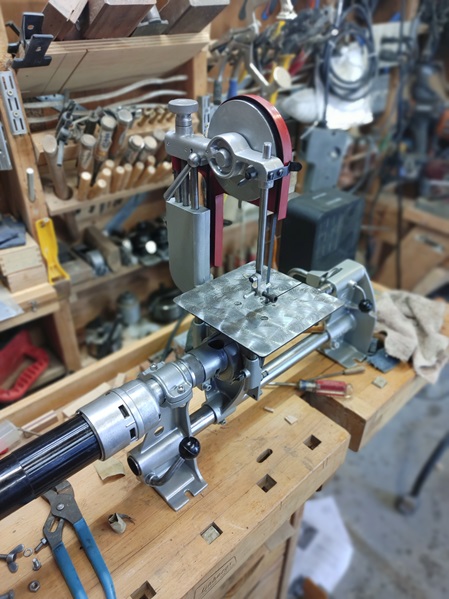Bosch Combi der 1. Generation.
Farbgebung: Silber Grau.
Anfang der 50ziger Jahre des letzten Jahrhunderts wurde das erste Bosch Combi Gerät von der Fa. Bosch entwickelt und durch die Fa. Prettl in Pfullingen hergestelt. Prettl war und ist immer noch Zulieferer der unterschiedlichsten Industriezweige.
Das Gerät bestand aus dem Motorhalter und einem Tischhalter mit Kugellagerung für die Werkzeuge (Sägeblatt und Antriebsscheibe der Bandsäge), Stahlauflage zum Drechseln und Reitstock, der umgebaut als Ständer-Bohrmaschine auch die Aufnahme für den Bohrtisch war.
Verbunden wurden die Komponenten durch ein 30mm Stahlrohr.
Einige Teile dieser ersten Ausführung wurden auch noch bei den späteren Ausführungen verwendet.
Mr.Geoffrey Baker aus Tucson/Arizona hat ein Bosch-Combi-Gerät aus dem Jahre 1956/57 erworben und sehr aufwändig restauriert.
Einige Bilder die sie hier sehen, wurden mir freundlicher Weise von ihm zur Verfügung gestellt.
Bosch Combi of the first generation.
Colour scheme: silver grey.
At the beginning of the 1950s the first Bosch Combi was developed by Bosch and manufactured by Prettl in Pfullingen. Prettl was and still is a supplier to a wide range of industries.
The machine consisted of a motor holder and a table holder with ball bearings for the tools (saw blade and drive disk of the band saw), steel support for turning and tailstock, which, converted to a pillar drilling machine, was also the support for the drilling table.
The components were connected by a 30mm steel tube.
Some parts of this first version were still used in the later versions.
Mr.Geoffrey Baker from Tucson/Arizona has purchased a Bosch-Combi unit from 1956/57 and restored it very complex.
Some of the pictures you see here were kindly provided by him.
The individual components could be stored in a solid cabinet. This cabinet was extensively restored from Mr.Baker.
© Geoff. Baker Tucson/Arizona
Total shot in the right outer door.
At that time the band saw was already part of the machine.
Unfortunately, this part was no longer available in the later versions.
However, it still fits the headstock.
Saw table, the motor is a hand motor from Bosch. The saw table was later also a component for the headstock, but in a modified version.
The band saw set up. © Geoff. Baker Tucson/Arizona
This is the saw table of the first version. He was missing to make the slots for the finger tines. But there was a tine milling machine for it.
Here is the tine cutter on the saw table of the 2nd version.
05.01.2021
Geoffrey Baker aus Tucson/Arizona hat einen Bericht über seine Restauration seines Bosch-Combi-Gerätes verfasst.
Ich habe diesen Bericht ins Deutsche übersetzt und stelle ihn hier ein.
Geoffrey Baker from Tucson/Arizona has written a report about his restoration of his Bosch Combi.
I have translated this report in German and put it here.
media/files/bedienungsanleitungen/geoffrey-baker-doku-uebersetzung.doc
Geoff. Baker aus Tucson hat auch ein Video gedreht.
Mr. Geoff. Baker from Tucson also made a video.
Restauriertes Bosch Combi Gerät. ©Geoff. Baker Tucson AZ/USA
This is the equipment cabinet from Mr. Baker Tucson/Arizona. He restored it and added the missing parts.
The next picture - here the cabinet is clear.
The pictures were kindly provided by © Geoff. Baker from Tucson/ Arizona.
Die Sägeblatt-Aufnahme ist bei dieser Version etwas komplizierter gestaltet.
Außer der Bohrmaschinen-Halterung benötigt man noch den Tischträger. In diesem ist die Lagerung für das Sägeblatt. Es ist ein gekapseltes Kugellager mit einem Innendurchmesser von 10 mm. In diesem läuft dann der Aufnahmedorn für das Sägeblatt und die Hobelwelle.
The saw blade holder is a little more complicated in this version.
Apart from the drill holder, you also need the table support. In this is the bearing for the saw blade. It is an encapsulated ball bearing with an inner diameter of 10 mm. In this bearing the arbor for the saw blade and the planer shaft runs.

Zusätzlich zu dem Spannbolzen, wird noch eine M10 Sechskantmutter und eine Unterlegscheibe benötigt.
Saw arbor and 100mm saw blade. In addition to the clamping bolt, a M10 hexagon nut and a washer are required.
 Für diejenigen, bei denen der Dorn fehlt, habe ich eine Zeichnung gefertigt. Diese ist zwar nicht DIN-Gerecht, aber für eine Nachanfertigung sollte es ausreichend sein. Die Lagerung läuft auf dem Ø 10 mm Absatz, dieser sollte saugend in das Lager passen. Die Maße sind ohne Toleranzangaben. Der Sitz Ø 10 mm für das Kugellager darf allerdings nur minimales Spiel haben.
Für diejenigen, bei denen der Dorn fehlt, habe ich eine Zeichnung gefertigt. Diese ist zwar nicht DIN-Gerecht, aber für eine Nachanfertigung sollte es ausreichend sein. Die Lagerung läuft auf dem Ø 10 mm Absatz, dieser sollte saugend in das Lager passen. Die Maße sind ohne Toleranzangaben. Der Sitz Ø 10 mm für das Kugellager darf allerdings nur minimales Spiel haben.For those who are missing the mandrel, I have made a production drawing. This is not DIN-compliant, but it should be sufficient for a remanufacture. The bearing runs on the 10mm heel, this should fit suction in the bearing. The dimensions are without tolerances. The seat 10 mm for the ball bearing may have only minimal clearance.



